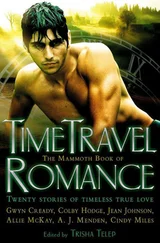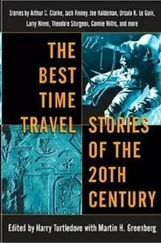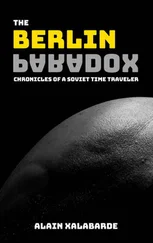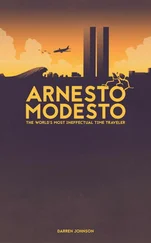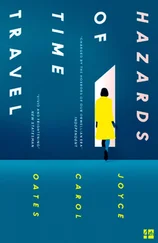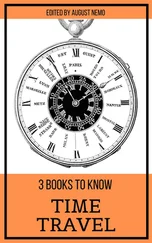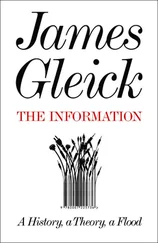James Gleick - Time Travel
Здесь есть возможность читать онлайн «James Gleick - Time Travel» — ознакомительный отрывок электронной книги совершенно бесплатно, а после прочтения отрывка купить полную версию. В некоторых случаях можно слушать аудио, скачать через торрент в формате fb2 и присутствует краткое содержание. Год выпуска: 2016, Издательство: Knopf Doubleday Publishing Group, Жанр: Старинная литература, на английском языке. Описание произведения, (предисловие) а так же отзывы посетителей доступны на портале библиотеки ЛибКат.
- Название:Time Travel
- Автор:
- Издательство:Knopf Doubleday Publishing Group
- Жанр:
- Год:2016
- ISBN:нет данных
- Рейтинг книги:5 / 5. Голосов: 1
-
Избранное:Добавить в избранное
- Отзывы:
-
Ваша оценка:
- 100
- 1
- 2
- 3
- 4
- 5
Time Travel: краткое содержание, описание и аннотация
Предлагаем к чтению аннотацию, описание, краткое содержание или предисловие (зависит от того, что написал сам автор книги «Time Travel»). Если вы не нашли необходимую информацию о книге — напишите в комментариях, мы постараемся отыскать её.
Time Travel — читать онлайн ознакомительный отрывок
Ниже представлен текст книги, разбитый по страницам. Система сохранения места последней прочитанной страницы, позволяет с удобством читать онлайн бесплатно книгу «Time Travel», без необходимости каждый раз заново искать на чём Вы остановились. Поставьте закладку, и сможете в любой момент перейти на страницу, на которой закончили чтение.
Интервал:
Закладка:
Over wires pour cataracts of invisible electric power, tamed and harnessed to light our homes, cook our food, cool and clean our air, operate the machines of our homes & factories, lighten the burdens of our daily labor, reach out and capture the voices and music of the air, & work a major part of all the complex magic of our day.
We have made metals our slaves, and learned to change their characteristics to our needs. We speak to one another along a network of wires and radiations that enmesh the globe, and hear one another thousands of miles away as clearly as though the distance were only a few feet….
All these things, and the secrets of them, and something about the men of genius of our time and earlier days who helped bring them about, will be found in the Time Capsule.
By way of artifacts, the capsule could carry only a few carefully selected items, including a slide rule, a dollar’s worth of U.S. coins, and a pack of Camel cigarettes. And one piece of headwear:
Believing, as have the people of each age, that our women are the most beautiful, most intelligent, and best groomed of all the ages, we have enclosed in the Time Capsule specimens of modern cosmetics, and one of the singular clothing creations of our time, a woman’s hat.
There was also movie footage—or, as the Book of Record helpfully explained, “pictures that move and speak, imprisoned on ribbons of cellulose coated with silver.”
Several dignitaries were invited to write directly to the people of the future—whoever, whatever, they might be. The dignitaries were grumpy. Thomas Mann informed his distant descendants, “We know now that the idea of the future as a ‘better world’ was a fallacy of the doctrine of progress.” In his message, Albert Einstein chose to characterize twentieth-century humanity this way: “People living in different countries kill each other at irregular time intervals, so that also for this reason anyone who thinks about the future must live in fear and terror.” He added hopefully, “I trust that posterity will read these statements with a feeling of proud and justified superiority.”
This first time capsule so-called was not the first time anyone thought to hide away some memorabilia, of course. People, like squirrels, are natural hoarders, collectors, and buriers. In the late nineteenth century, amid the rising consciousness of the future, “centennial” fairs inspired time-capsule-like impulses. In 1876 Anna Diehm, a wealthy New York publisher and Civil War widow, set out leather-bound albums for thousands of visitors to sign at the Philadelphia Centennial Exposition and then locked them in an iron safe, along with a gold pen used for the signing and photographs of herself and others, and inscribed a message to posterity: “It is the wish of Mrs. Diehm that this safe may remain closed until July 4, 1976, then to be opened by the Chief Magistrate of the United States.” *5But the Westinghouse time capsule and the Oglethorpe crypt were the first self-conscious attempts at wholesale cultural preservation for the sake of a notional future—reverse archeology. They mark the beginning of what scholars have called the “golden age” of time capsules: the era when people, worldwide and in increasing numbers, have buried in the earth thousands of parcels, ostensibly intended for the information and education of future creatures unknown. In his study Time Capsules: A Cultural History, William E. Jarvis calls them “time-information transfer experiences.” They represent a special version of time travel. They also represent a special kind of foolishness.
—
THE TIME CAPSULE IS a characteristically twentieth-century invention: a tragicomic time machine. It lacks an engine, goes nowhere, sits and waits. It sends our cultural bits and bobs traveling into the future at snail’s pace. At our pace, that is. They travel through time in parallel with the rest of us, at our standard velocity of one second per second, one day per day. Only we go about our business of living and decaying, while the time capsules try, ostrichlike, to evade entropy.
Builders of time capsules are projecting something forward into the future, but it’s mainly their own imaginations. Like people who buy lottery tickets for the momentary dreams of riches, they get to dream of a time to come when, though long dead, they will be the cynosure of all eyes. “A story of international importance and significance.” “Prominent men from all over the world assemble.” Clear the airwaves: Dr. Thornwell Jacobs, Oglethorpe University, AD 1936, has something to say.
Looking backward, they misconstrue the intentions of their ancestors. They have the disadvantage of hindsight. Cornerstones of new buildings have long been repositories for inscriptions, coins, and relics, and now, when demolition crews stumble across such items, they mistake them for time capsules and summon journalists and museum curators. For example, in January 2015, many news organizations in the United States and Britain reported the “opening” of what they called “the oldest U.S. time capsule,” supposedly left to us by Paul Revere and Sam Adams. This was in fact the cornerstone of the Massachusetts State House, dedicated in 1795 at a ceremony attended by Adams, then the governor, along with Revere and William Scollay, a real-estate developer. The cornerstone memorabilia were wrapped in leather, which naturally deteriorated. In 1855 they were found during foundation repairs and reburied, this time in a brass box the size of a small book, with some extra new coins for good luck, and in 2014 State House workers uncovered the box while trying to trace some water damage. This time, it was thought to be a time capsule. The “air channels of the radio-newspaper and world television broadcasting systems” were not cleared, but several reporters showed up and video cameras rolled as museum conservators examined the contents: five newspapers, a handful of coins, the seal of the Commonwealth of Massachusetts, and a dedicatory plaque. From these items what could be inferred? The Associated Press interpreted them this way:
Early residents of Boston valued a robust press as much as their history and currency if the contents of a time capsule dating back to the years just after the Revolutionary War are any guide.
“How cool is that?” one of the archivists was quoted as saying. Not very. The correspondent for Boston.com, Luke O’Neil, injected a rare note of skepticism: “ Behold these great wonders from the past! today’s press is proclaiming, a printed broadsheet newspaper and a currency made out of metal. ” These items had nothing to tell us about Paul Revere or Sam Adams or the life and furniture of post-Revolutionary Boston, nor were they ever meant to. The curators decided to seal them up with plaster once again.
Cornerstone deposits are almost as old as cornerstones. They were not messages to people of the future but votive offerings, a form of magic or sacred ritual. Coins dropped in fountains and wishing wells are votive offerings. Neolithic people entombed axe hoards and clay figurines, Mesopotamians hid amulets in the foundations of Sargon’s palace, and early Christians cast tokens and talismans into rivers and buried them in church walls. They believed in magic. So, evidently, do we.
When did eternity, or heaven—the afterlife outside of time—give way to the future? Not all at once. For a while they coexisted. In 1897, the Diamond Jubilee year of Queen Victoria, five plasterers completing the new National Gallery of British Art on the site of the old Millbank Prison penciled a message inside a wall:
This was placed here on the fourth of June, 1897 Jubilee Year, by the Plasterers working on the Job hoping when this is Found that the Plasterers Association may be still Flourishing. Please let us Know in the Other World when you get this, so as we can drink your Health.
Читать дальшеИнтервал:
Закладка:
Похожие книги на «Time Travel»
Представляем Вашему вниманию похожие книги на «Time Travel» списком для выбора. Мы отобрали схожую по названию и смыслу литературу в надежде предоставить читателям больше вариантов отыскать новые, интересные, ещё непрочитанные произведения.
Обсуждение, отзывы о книге «Time Travel» и просто собственные мнения читателей. Оставьте ваши комментарии, напишите, что Вы думаете о произведении, его смысле или главных героях. Укажите что конкретно понравилось, а что нет, и почему Вы так считаете.


